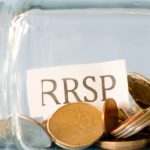 By Aaron Hector, B.Comm., CFP, RFP, TEP
By Aaron Hector, B.Comm., CFP, RFP, TEP
Special to the Financial Independence Hub
“In this world nothing can be said to be certain, except death and taxes.” – Benjamin Franklin
While death and taxes may be certain, the variables in and around them are certainly not. That’s why they warrant attention and planning. The following analysis provides some food for thought when deciding whether to use proactive tax planning to optimize your living net-worth or your after-tax estate.
A tisket, a tasket, a future tax basket
Most retirees have baskets of “future tax” that are just sitting there in abeyance. The most common of these tax baskets is the one that’s attached to RRSP accounts. When you contribute to your RRSP, you get a tax deduction which gives you a break on the taxes payable in that year. But when the time eventually comes to make a withdrawal, each dollar you remove from your RRSP will be fully taxable and increase your income accordingly.
Depending on the situation, there could be several other future tax baskets as well. For example, you might have unrealized capital gains that are attached to a non-registered investment account, or even an additional property. When these assets are sold in the future, the capital gain at that time will be subject to taxation.
Our tax system is progressive, which means the tax rates continue to increase as your income does, thus moving you from a lower tax bracket to a higher one. When you die (without a surviving spouse), all of the remaining tax baskets are dealt with at that time. This often results in a significant amount of taxable income that’s exposed to the highest marginal tax rates which can exceed 50%, depending on your province of residency.
Managing future tax
What can be done to manage this future tax in a way that avoids exposure to such high tax rates? One popular approach is to look at your projected retirement income and identify when in the future there might be years where income is lower than average or higher than average, and then try and shift income away from the high years to fill in the low years. This “tax averaging” often results in an acceleration of income in earlier years, which then lowers the exposure to high tax rates later in life or upon death.
If you think this sounds challenging, remember that any financial planner worth their salt should be able to review your assets and liabilities, then map out your projected income going forward on a year-by-year basis. The low-income years most commonly occur immediately following retirement; the paycheque has stopped, but maybe you have ample cash and non-registered savings that can be used to fund your lifestyle. It’s quite possible that the income you would report on your tax return in these years would be minimal. However, by the end of the year that you turn 71 your RRSP accounts must be converted into RRIF accounts, giving rise to forced annual withdrawals that are fully taxable. These mandatory withdrawals might mark the beginning of your high-income retirement years and may even result in your Old Age Security (OAS) being clawed back. That being said, it really depends on one’s individual circumstances.
The nice thing about the future tax is that, for the most part, you have flexibility in deciding when you convert that future tax into current tax. Just because you can wait until age 72, when you are forced to make your first withdrawal from your RRSP (RRIF), doesn’t mean that you must wait until you are 72. Furthermore, this doesn’t need to be a cash flow decision. If you don’t need the money to fund your lifestyle, then you can simply take the money that is withdrawn from the RRSP and then (subject to withholding taxes) reinvest it back into another account such as your TFSA or non-registered account. The point here is that you have the option of choosing what you believe to be an optimal year to increase the amount of income that will be reported on your tax return.
Similarly, you can choose to trigger a capital gain within a non-registered account at any time. A sale of a stock doesn’t need to be an investment decision – it can be a tax decision. Simply sell the stock, thereby triggering the capital gain, and then immediately rebuy it. The capital gain will then be reported on your tax return in the year it was sold, and your taxable income will be increased accordingly.
In a nutshell, every dollar of income that you accelerate is a dollar of income that you don’t have to report in the future, and you get to choose what tax rates get applied to that dollar; the current marginal rate, or the future marginal rate (which could be higher). It’s easy to see how this process can result in your paying a lower average lifetime tax rate.
How to impact your lifetime assets and estate
Let’s dig a bit deeper. How do these choices carry forward and impact your lifetime assets and ultimately your estate? I’ll begin with some foundational ideas and then provide a real-life example.
Imagine a scenario where your current marginal tax rate is 30% while living, but if you died then the marginal tax rate on your final tax return would be 50%. Continue Reading…







